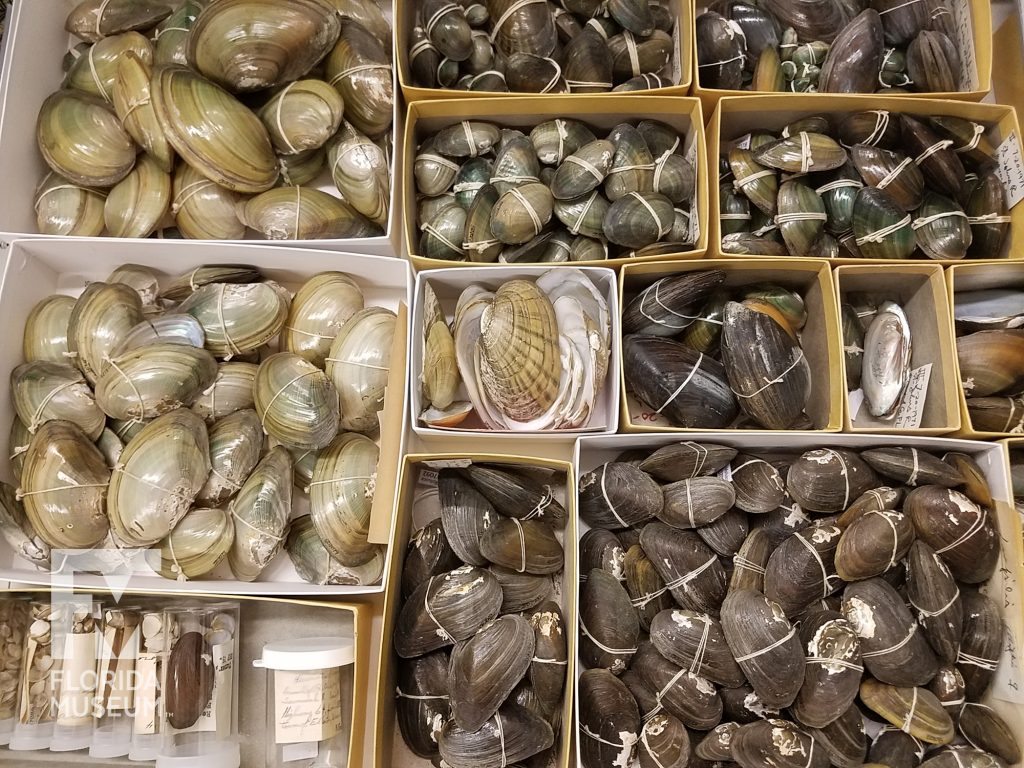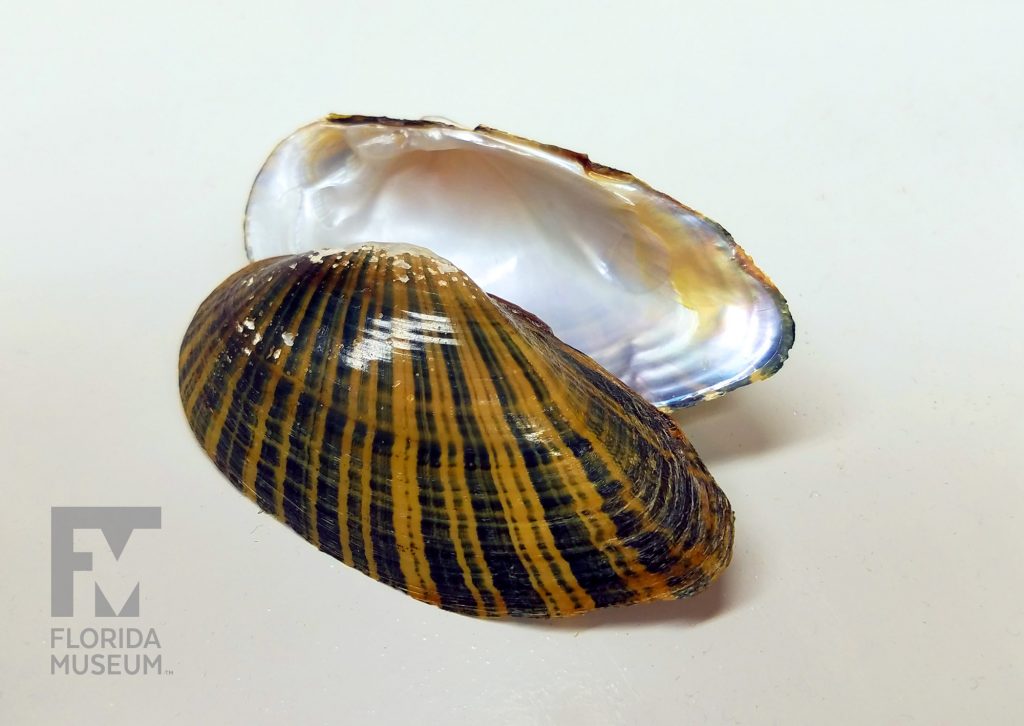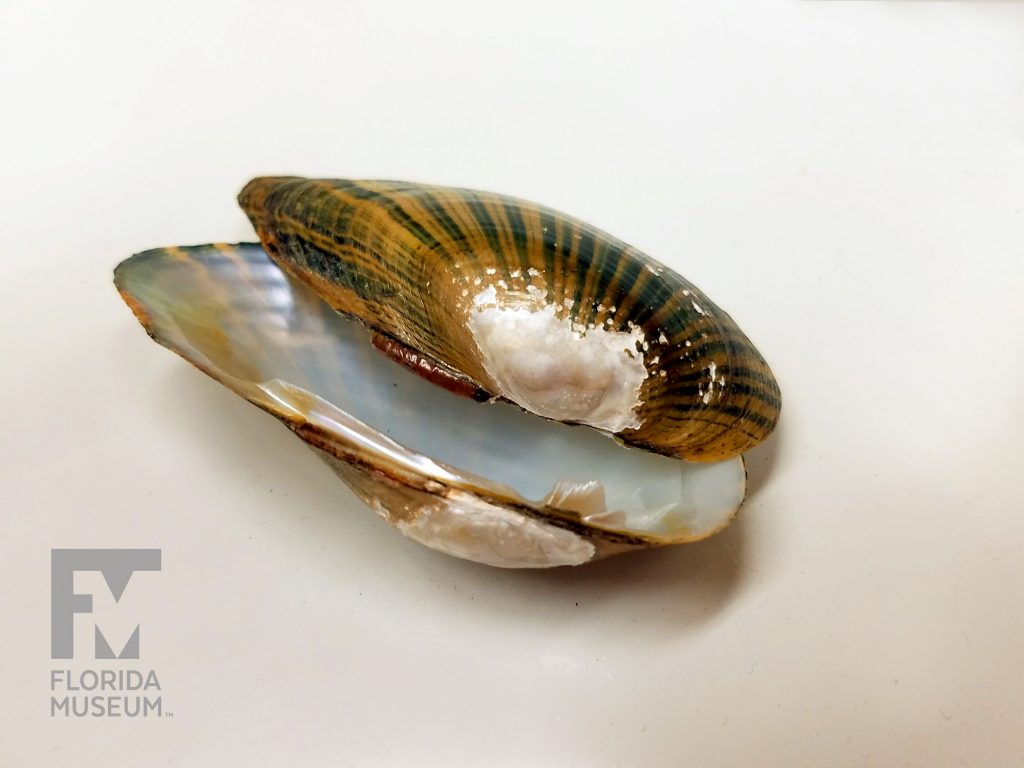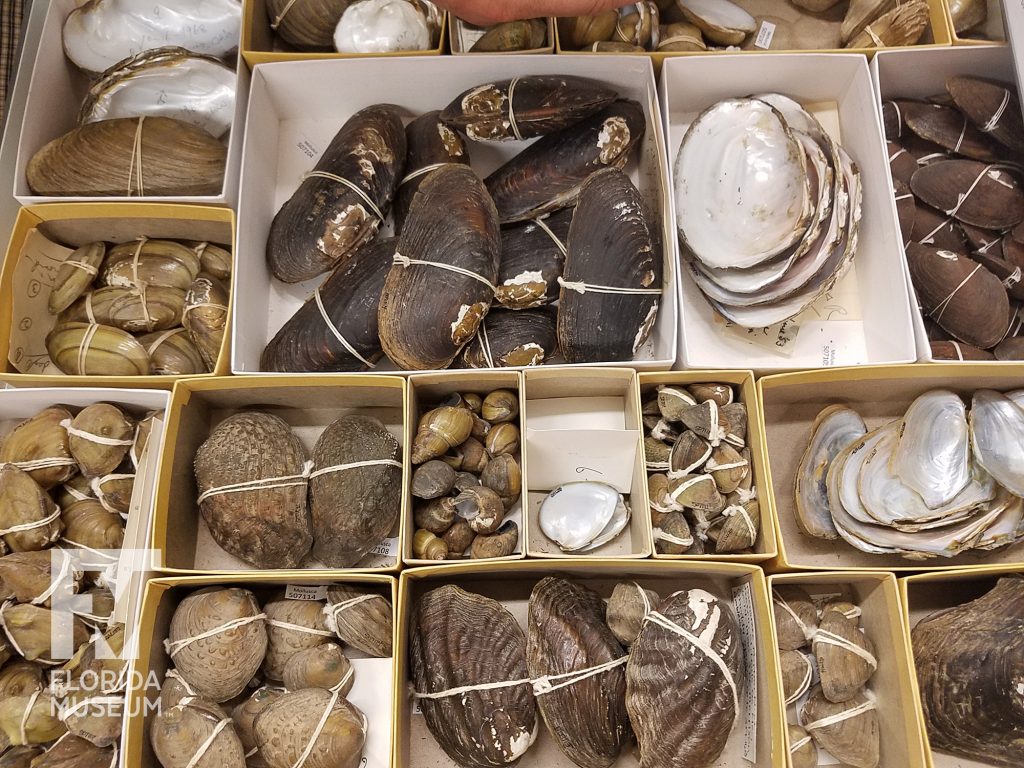Unionidae is a family of freshwater mussels with a global range. There are about 300 recognized species in North America alone. They’re also called river mussels because most species live in rivers and creeks. Because most live in water that constantly flows in one direction, they’ve had to evolve an interesting approach to reproduction.
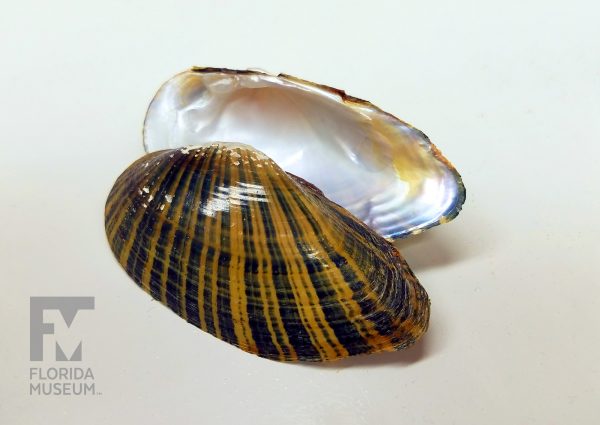
Florida Museum photo by Radha Krueger
Most bivalves, including mussels, just release eggs and sperm into the water and leave it up to chance that the two meet, fertilize and disperse to become the next generation. But if river mussels did this, they would eventually die out because their sperm and eggs would be constantly pushed downstream.
Instead, male river mussels disperse their sperm and females collect it. Eggs are fertilized inside their shells and are kept on their gills until the offspring reach the first larval stage. The mussels then wait for a fish to approach and eject the larvae onto the fish. The larvae use the fish as a host for several weeks until they fall off and burrow into sediment to develop further.
Some species of river mollusks even use a lure that looks like a fish to bring an actual fish close enough for the mollusk to transfer her larvae directly to the fish’s gills where they have a greater chance of surviving to become juvenile mollusks.
Unionidae are considered one of the most endangered animal groups. Because they live in freshwater rivers, they are not only susceptible to pollution and poor water quality, their habitats are often interrupted by artificial dams. Damming a waterway creates water that is too deep and anoxic on one side, and water that is too shallow and without sediment on the other. Dams also block larval transportation up- or downstream, creating a closed environment.
Source: John Slapcinsky, slapcin@flmnh.ufl.edu, 352-273-1829
Learn more about Invertebrate Zoology at the Florida Museum.
Read the invertebrate zoology blog, Adventures in Spineless Science.
